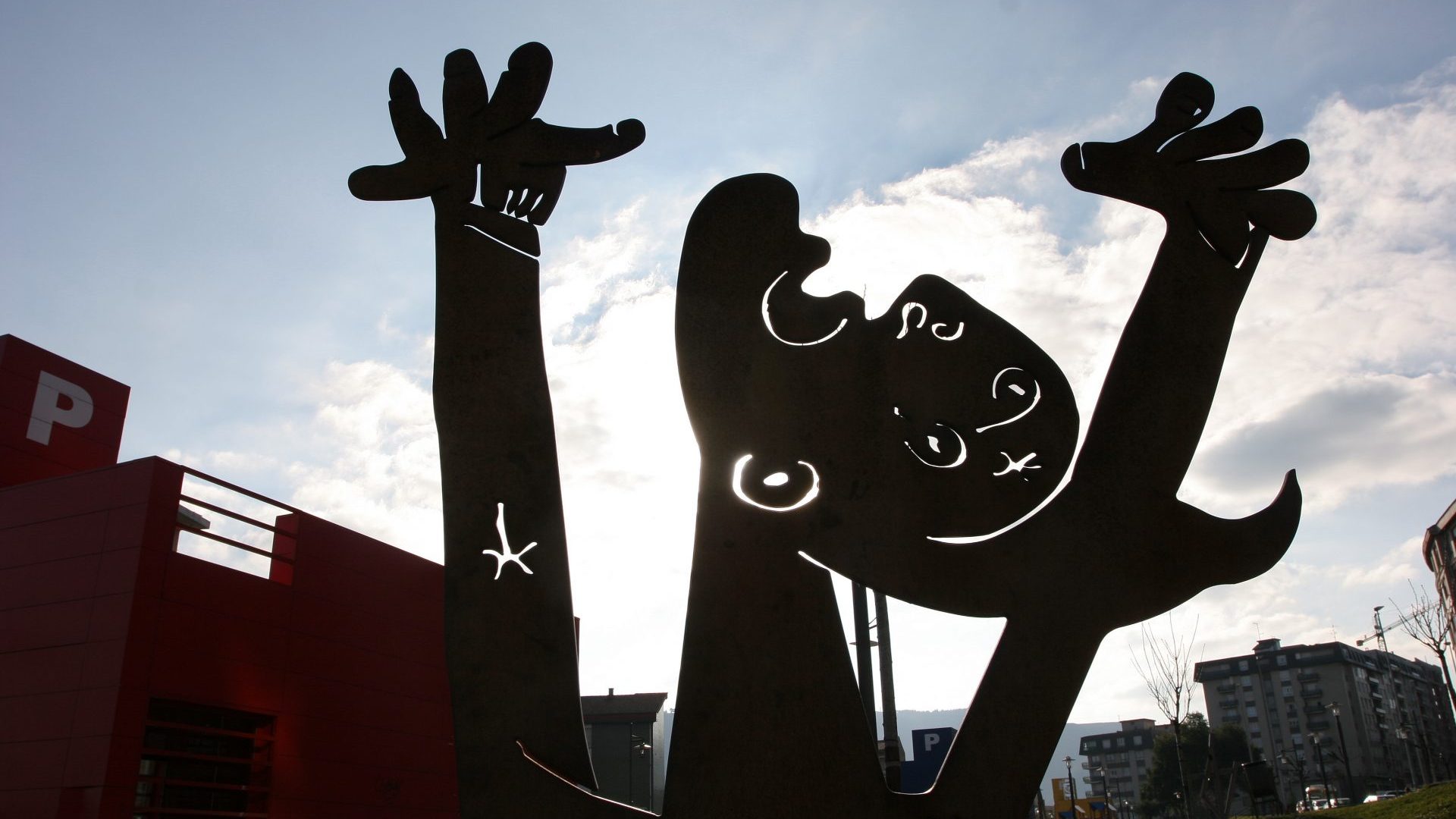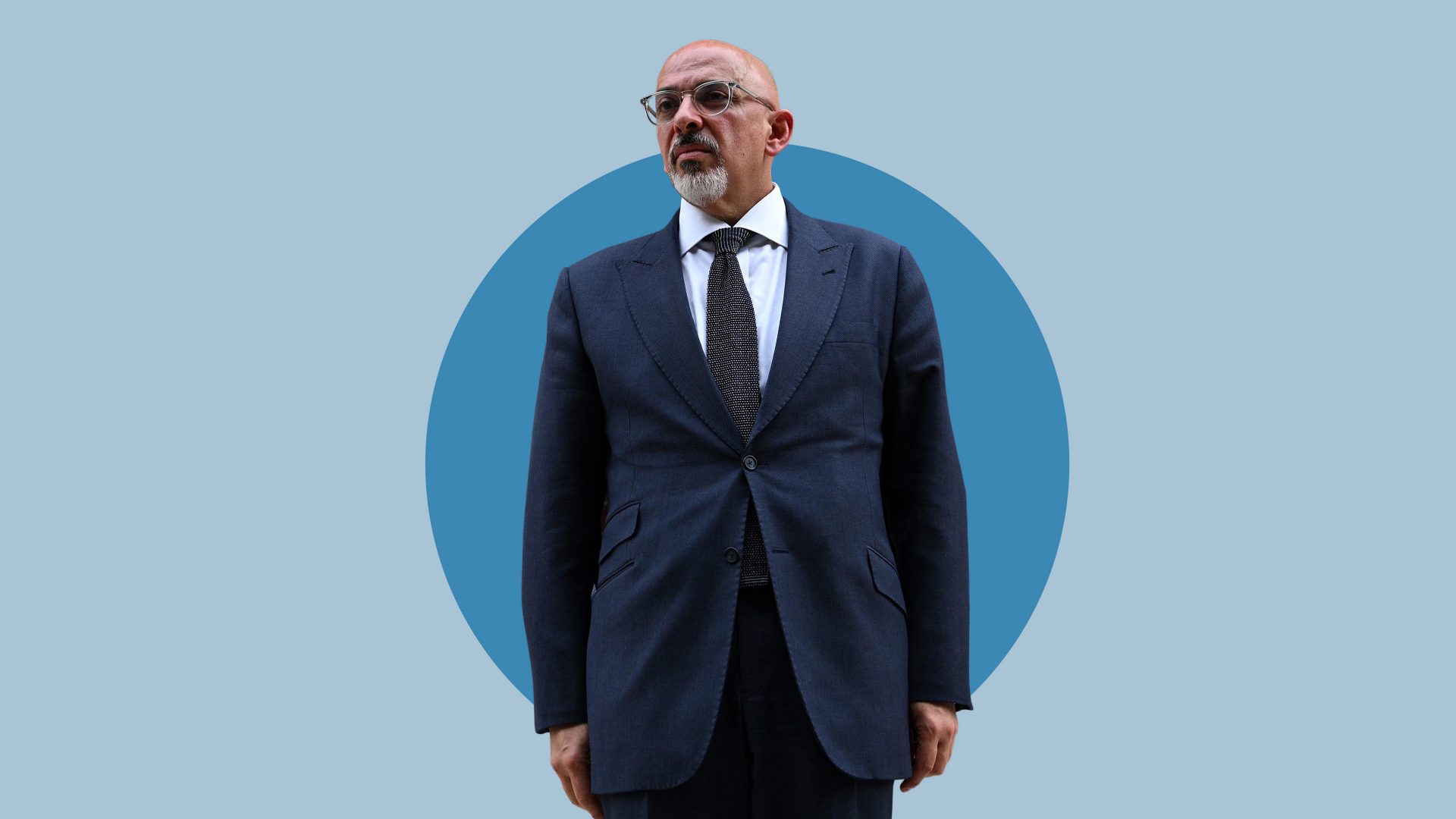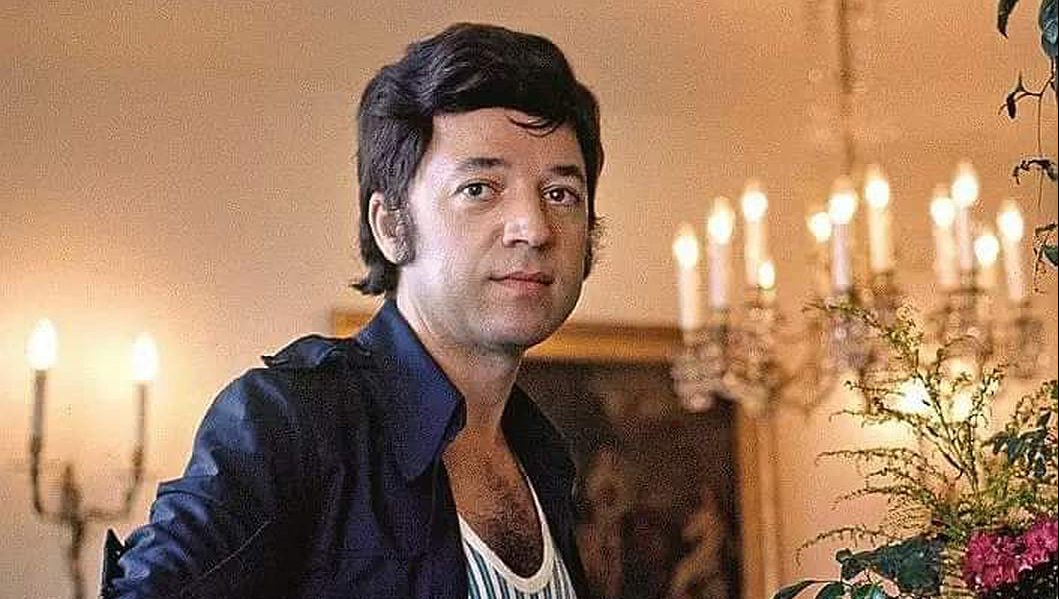In the winter of 1941, Pablo Picasso was living and working at the top of an old house in the rue des Grands Augustins in Paris. The Seine was a stone’s throw away. Hard northern light swept in over the rooftops. Pigeons perched on the sills. But Picasso’s Left Bank life during the Occupation was more bohemian than he would have wished. It was bitterly cold and the electricity was unreliable. Only an old-fashioned floor-to-ceiling stove, and his latest lover, Dora Maar, kept him warm. His painting was becoming gloomily repetitive: jagged- headed women weeping tears like steel beads or thin spills of blood; flayed heads of sheep. And, unfortunately, he fancied himself as a Surrealist playwright.
There was a conspicuous absentee from the display kept around the studio: Guernica, the painting that had made him the most famous – or notorious – artist in the modern world. The Germans didn’t like it very much, the scream of pain at the barbarities inflicted by the Luftwaffe on the helpless civilians of a Basque town in the spring of 1937. But they couldn’t get to it. In the nick of time, in 1939, Guernica had been shipped off to New York on the SS Normandie, like a refugee, along with the violinists and psychiatrists from Vienna and Berlin. Installed in the Museum of Modern Art, it had become more than just a picture of horror. Guernica was a billboard of moral indignation; a site where people gathered to be reminded of what separated them from fascist cruelty. It was the good incendiary.
Thwarted from seizing the offending object, the Nazis in Paris gave Picasso the hardest time they could, short of actually arresting him. Collaborators attacked him in the Vichy press for corrupting the noble art of painting. Hints were dropped that he might be Jewish himself or that he was hiding
Jewish artists. “Where is Lipchitz?” the French militia thugs yelled at him as they trashed the studio. But Picasso was not easily intimidated, and brazened out the attacks. He kept postcard reproductions of Guernica in his studio and enjoyed giving them to the intruding Gestapo and French police: “Go on, take one,” he would say impishly. “Souvenir!”
One day, so the story goes, a German officer, both bully and secret admirer,
paid Picasso a visit. Picking up one of the Guernica postcards, he turned on
the painter and asked him accusingly, “Did you do this?” “Oh, no,” said the
artist, “you did!” It’s a smart comeback, quick as a whip. But who really got the better of the legendary exchange? Picasso’s disingenuous deference to the difference between power and painting was actually a gesture of self-congratulation. He knew that as long as his picture was around, the world would remember the bombing of Gernika as an unspeakable atrocity. In this sense, at least, even though the painting had done nothing to defeat General
Franco’s fascists in Spain, nor stopped a single act of massacre in any of the
wars that followed, art had, at least, become testimony for the prosecution.
But is that also a delusion, a salve for tender consciences while the brutality
grinds on? Maybe it would be more honest for art, especially modern art, to drop the self-righteousness and just get on with what it does best: the delivery of pleasure?
It was about four in the afternoon on a spring Monday, April 26: a market day. The people of Guernica – or in Basque, Gernika – were emerging from their siesta. Shops and banks were opening; old men in long Basque moustaches were sitting outside cafés, toying with brandies, drinking the
April warmth. The sky was limpid. Out of the blue a speck appeared, a solitary plane. It made a few low passes over the market and the assembly house with the oak at its back, and then, hanging over the densest part of town, disgorged six bombs. The town was immediately engulfed in smoke and flames.
Minutes later three more planes dropped 50-kilogram bombs, and then successive waves of Heinkels and Junkers flying in formation inflicted a
storm of havoc that continued for over an hour. Rather than risk incineration in their houses, the people of Gernika ran into churches, where they thought they might be safe, or down the hilly streets into the fields and woods surrounding the town. Which is exactly what the German fliers had
been anticipating, so they emptied round after round of machine-gun fire
on the frantic, helpless civilians. Bodies started to pile up in the streets.
The coup de grâce remained. In a third wave, the Heinkels delivered a payload of 3,000 aluminium-cased tubular incendiary bombs, designed to maximise conflagration on the ground and turn the town into a bowl of fire. It took three hours to reduce Gernika to that ashy cauldron. One thousand, six hundred and forty-five of its people – nearly a quarter of the population – perished right away; thousands more were terribly wounded.
Hearing the explosions and wondering what was happening, George Lowther Steer, correspondent for the Times, covering the Basque war from Bilbao, got himself to Gernika as fast as he could. At the entrance to the town he was stopped by a “carpet of live coals” like a moving river of lava from a volcanic eruption. Once he penetrated the town, he saw the scale of destruction: “blocks of wreckage slithered and crashed from the houses and from their sides which were still erect, the polished heat struck at our cheeks and eyes”. Steer picked up the housing of an incendiary bomb and noticed right away the German mark and date of manufacture. Then he took a photo of it.
Two days later, on April 30 1937, Picasso read the French translation of Steer’s Times article, published in Ce Soir.
“At 2 am today when I visited the town the whole of it was a horrible sight, flaming from end to end. The reflection of the flames could be seen in the clouds of smoke above the mountains, from 10 miles away. Throughout the night, houses were falling until the streets became long heaps of red, impenetrable debris. Many of the survivors took the long trek from Gernika to Bilbao in antique solid-wheeled Basque farm carts drawn by oxen. Carts piled high with such possessions as could be saved from the conflagration clogged the roads all night.”
On May 1 1937, two days after Picasso had read Steer’s story, he began work. Beyond the rue des Grands Augustins he could hear the low drone of a May Day march going through the streets. He still had no clear idea of what he was doing, but was certain that he had to begin. He started with a pure adrenaline rush – graphite scribbles on blue paper, thoughts racing ahead of his hand. But even on that first day, the ambitious grandeur of the concept was apparent. The cast of characters imprinted on his mind over the previous three years – a wounded horse, a massive bull and a candle-light bearer – make an immediate appearance. Later that afternoon, as if trying to kick free from the oppressive solemnity of the work, Picasso impersonated a small child’s drawing of a horse, something utterly innocent of the weight of
history. But the playfulness didn’t last. The next day the horses were rendered in states of excruciating torment: necks violently twisted (as they had been in some of the bullfight paintings); the tongues conical, as if a spear had pierced the animal through the throat; bottle-cork teeth agape in a
whinny of death.
At some point Picasso had the inspired, if typically ruthless, idea of
transferring the theatrical agony of his personal life into his new-found
political art. Heads of women, tracked with arteries of pain and punctured
with bloody tears, began to appear in the Guernica drawings. As he played
with the baby at weekends (and he did love that), visions of domestic tragedy
processed through his mind. Instead of embracing the pleasures of play, he
plunged into easily imagined misery. For the first time, a mother carrying a
dead baby crawled on to the scene, mouth wide open in distracted, screaming grief. A series of sketches drawn over the next few days repeated
this thrown-back head of the grieving mother, breasts painfully distended,
unable to nurse the dead infant, seen folded in two-dimensional limpness
over her arm.
On May 11 he began to attack the huge canvas. At 20 feet long and 12 feet
high (almost the same dimensions as Caravaggio’s Beheading of St John the
Baptist) it was too tall to fit perpendicularly between floor and roof rafters, so Dora and Picasso propped it against the wall at an angle. The painter climbed a ladder to work on the upper sections, and tied brushes to sticks to reach the topmost area. When working on the foreground, he squatted or sat on the floor. None of the discomfort bothered him. Picasso chain-smoked his way through it all in a storm of impetuous creativity.
The feverishness translated itself into the frantic, bolting energy that surges through Guernica: a manic this- way-and-that, a futile flight from burning buildings, a pyre of falling and fallen bodies. It’s impossible to look at Guernica and not feel the panicky sense of No Way Out, intensified by its black and white night vision, at once brutally sharp and obscurely disorientating. Walls and windows fail to do the things they are meant to do. Turned inside-out, they trap, obstruct and expose rather than contain and protect.
Deeper into the painting, changes became dramatic. “When you begin a picture you often make some pretty discoveries,” he had said two years before. “You must be on guard against these. Destroy the thing, do it over
several times.” The alterations were almost all pessimistic. The gestures
towards hope and redemption that had appeared early on – a clenched socialist fist rising from the pile of bodies; a head of wheat; a massive bull
standing against the mayhem – now collapsed into the more unrelenting
tragedy. The bull shrank, to stand impassively above the dreadful figures
of the mother and baby, and beside the shrieking horse, itself dying from a
huge, lozenge-shaped wound. In some of the earlier versions, Picasso had
played with an optimistic gesture. From the hole a tiny winged horse – Pegasus, the mythical symbol of the birth of art and poetry – emerged. In
classical mythology the horse had been born from the Gorgon Medusa
after she had been killed by the hero Perseus. Pegasus was his mount who
flew high, landing on Mount Helicon. From the touch of his hoof a pool
sprang bright and clear, blood turned to crystal purity, and the pool became
the font of the Muses, the source of the arts. Something good – art itself –
Picasso evidently wanted to say, may yet come from slaughter. A sweet idea,
which is why, as the tragedy sank its claws into the painting, he killed it. Dora Maar was brushing in a grey wash, as if mantling the picture in smoke,
and Picasso turned a vagina back into a frightening, deep, black gash at the
optical dead centre of the painting.
Originally, too, the fallen warrior with the broken sword had been grander, stronger, his head helmeted like a classical hero, a Hector. Then Picasso remembered an image from a late medieval Spanish apocalypse manuscript and turned the warrior on his back, mouth open, slack-jawed and gaping. But from the squared-off base of the neck and the severed arm, it also seems that Picasso has made the figure a shattered, hollow statue, its bust and torso broken. Beside its right hand he has set another unconvincing emblem of hope: a single daisy, a smidgen of life amid the carnage, all the more poignant for being drawn in the manner of a child, that gesture of art-less innocence that the cleverest painter in the world (once a child prodigy) has taught himself to impersonate. More startlingly, on the opened palm of the left hand (more like flesh and less like plaster) he has drawn an unmistakable puncture wound, the stigmata of the risen Christ.
So the cool modernist was now quoting the Gospel. It was General Franco who was supposed to be the Christian Soldier. And that, of course was the point, turning the tables on the sanctimoniousness of the Falange leader, the Caudillo. For Picasso’s head contained one more image of the agony of his nation. It was one that every Spaniard knew and for which he, as Director of the Prado, had personal responsibility: Goya’s Third of May 1808. That masterpiece too had been the response of an artist to cruelty and massacre, in Goya’s case to the execution in Madrid of rebels who had risen against Napoleon’s invasion. And, like Picasso, Goya’s standing as a tribune of outrage was complicated by the fact that his politics had been ambiguous, as were his attitudes to the two Spains, old and new. Intellectually he was a reformer – which might have put him on the side of the pro-French party against the obscurantist reactionaries of the court. But Goya was also in his way a traditional Spanish patriot, and on this occasion he unequivocally took the side of the victims. In the pudding of gore to which the face of a shot prisoner, fallen on the ground, has been reduced, and in the faceless machine of the firing squad, the muzzles of their guns a perspective line of death, Goya created the first painting of modern state brutality; the polar opposite of Jacques-Louis David’s cosmetic classicism. But the Spaniard’s painting is also saturated with redemptive symbolism and coloured (literally, for the martyr at the post is dressed in the Papal-Catholic colours of yellow and white) by the hope of salvation. He is dying the Saviour’s death, arms flung wide, Christ’s puncture wound appearing on his opened palm – the same wound that appears on the left hand of the Guernica sword-bearer.
Picasso has – more obliquely – taken something else from Goya’s execution,
which, like Guernica, is a nocturnal massacre. It’s a detail that stands the conventions of art themselves on their head: the alteration of light from a source of good, the primary condition of the creation of art, to the accomplice of evil. In everything written about painting, everything done, radiance is the bringer of beauty. Describing masterpieces as “luminous” had long become commonplace, as had the habit of alluding to works by Caravaggio and Rembrandt as somehow emitting light. But there’s something about Goya’s terrible fancy that modern light might also be malign – the enabler of torture and murder – that wormed itself into Picasso’s imagination. He thought of The Third of May 1808, a scene in which dirty business is being done in the dead of night, and saw that the lantern is, literally, the light in which we regard evil. Now look at Guernica. The swell of writhing bodies, the pyramidal form prescribed by the academic rules of composition that Picasso would have learnt as a child, heaves up towards an eye-shaped lamp, its brilliance denoted by a jagged flare like the flash of a sunspot. Initially, the apex of the entire composition was upbeat and heroic:
an upright arm, its fist clenched around a flower stalk, backlit by the sun. Instead of that stock image of comradely resistance, Picasso set a blank eye: the organ of beholding. But then, at the last minute – when Picasso had so many of his best ideas – he changed the centre of the heartless, artless eye in Guernica into a single light bulb, an implacable incandescence beneath which the horse writhes in its death throes and shrieking mayhem proceeds. When he was later asked about the symbolism of Guernica, Picasso turned laconic again, resisting over-reading. The bull was just a bull and the lamp just a lamp.
But it’s hard not to be put in mind of Goya’s lamp of darkness, or the searchlight of the targeting bomber and so many other brightly
illuminated modern miseries. Franco the bristling turd, the slimy sea-squirt,
has been replaced by something much more malignant in its impersonal
banality. Against its flare is, after all, the candle-light, held straight out by a
classically beautiful arm. It’s a tournament of lights, then, good and wicked; art versus electricity.
The above extract is taken from The Power of Art, by Simon Schama, published by The Bodley Head



